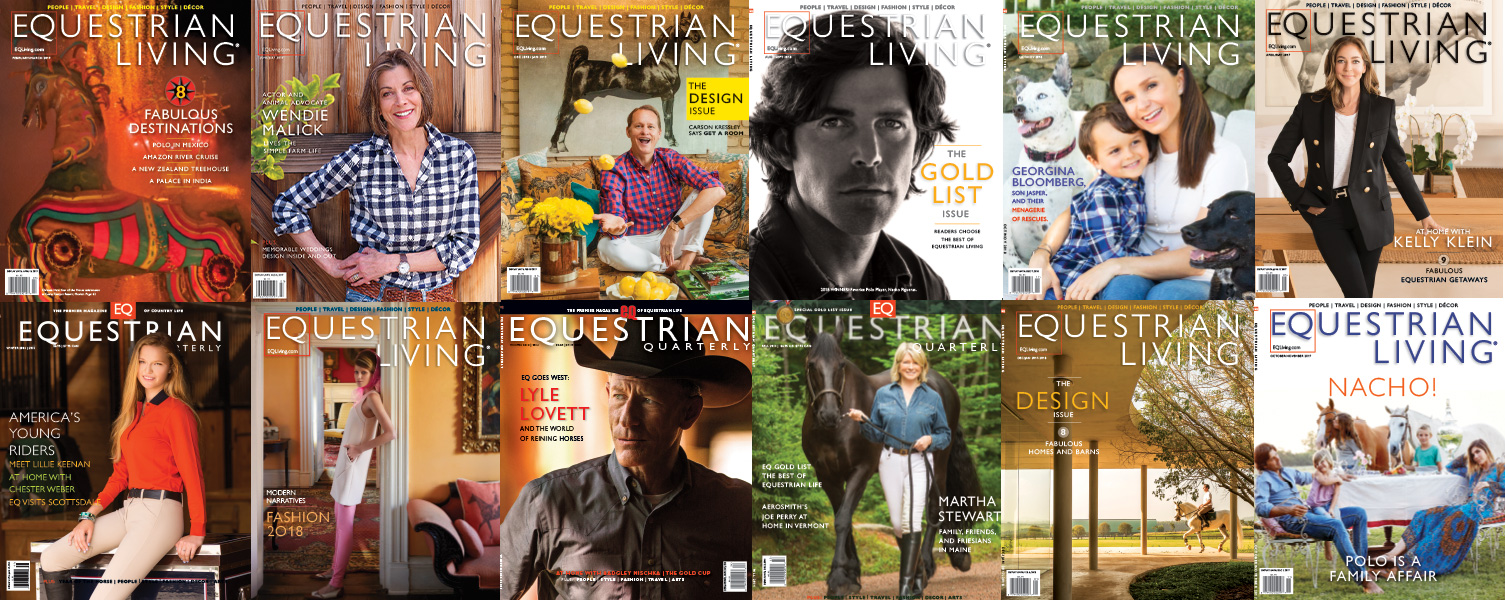BY SARAH LESSLER
Kali Cram is not only a National Academy of Sports Medicine (NASM)- certified fitness professional but an avid equestrian who has spent her life in the saddle and working in the equestrian industry, who now helps riders stay fit and ready for competition.
She grew up riding on the American Paint Horse Association circuit. While attending St. Andrews University in North Carolina, Kali rode for the school’s intercollegiate English and Western teams. “My coaches were a major contributor to the horsewoman I’ve become,” says Kali. The summer going into her senior year, Kali landed a job grooming for Kent Farrington, accompanying him to top events in the United States and abroad for the next three years. During her time in Europe, Kali started to work out. She grew increasingly fond of the time she spent and explored different forms of exercise.
In 2015, Kent helped her to find a job as a farm manager at a private family farm in Newtown, Connecticut, and Wellington, Florida. While working on the farm, Kali’s enthusiasm for fitness grew, not only as a hobby, but also as a passion. On an average day, she would spend time at the gym and then ride four horses. Friends began to want to join Kali in her workouts and would ask her for tips on improving their fitness plans. In 2019 she decided to get certified as a personal trainer.
Soon Kali began working as a personal trainer out of Limitless Performance in Wellington, Florida, where many equestrian athletes cross-train. When the COVID-19 shutdown halted much of the fitness and equestrian sports industries, Kali moved to Lexington, Kentucky. Soon, she found that much of the industry was moving online, offering services remotely to clients. “This change was actually one that could really benefit equestrian athletes because they are so frequently traveling,” said Kali. She had found her niche.
Remote training presented many challenges. Not only could she not physically touch and assist her clients, but people had limited equipment and access to typical gym supplies. So, she adapted her techniques and customized each workout to the client. Not only did clients have different levels of equipment, but as horse shows returned, each client could be in a new location each week. Kali smiles, “I sometimes train clients out of a grooming stall at a horse show.
“Most issues that riders bring to me are related to their hips or their shoulders,” she continues. “Riding puts a great deal of strain on both those body parts, and riders’ bodies are often out of line, so I focus on full-body mobility and flexibility. Many of my clients spend a lot of time sitting on planes and in cars to get to shows, so I stress the importance of mobility in their workouts.
“Training people is a little like training horses,” she says. “You can’t train two horses or two people the exact same way.”
BEST EXERCISES FOR RIDERS:
1. ROWS: using cables for rows is ideal as it imitates the reins. Kali has her clients sit on an exercise ball to create an unstable seat which mimics riding a horse while constantly engaging the core. While many riders won’t have access to cables while on the road at shows, one could use exercise bands.
2. MOBILITY: A rider’s most-used muscle is the hip flexor. Kali recommends always incorporating hip-opener exercises like “pigeon” or 90/90’s into your workouts. Kali focuses on full-body mobility, especially the hips, spine, and shoulders.
3. GLUTE BRIDGE: A glute bridge hold always gets the glutes firing, and having strong glutes will counteract the tightness in hip flexors. “Riders across the board have underactive glutes and overactive hip flexors. Holding a glute bridge or working them into a set is a great way to strengthen the glutes and also stretch the hip flexors,” says Kali.
4. REAR DELT FLIES: to strengthen your back and help eliminate rounded shoulders while riding. Kali says she incorporates rear delt flies “to help open the pectoral muscles, strengthen the back, and bring more movement to the upper body.”

